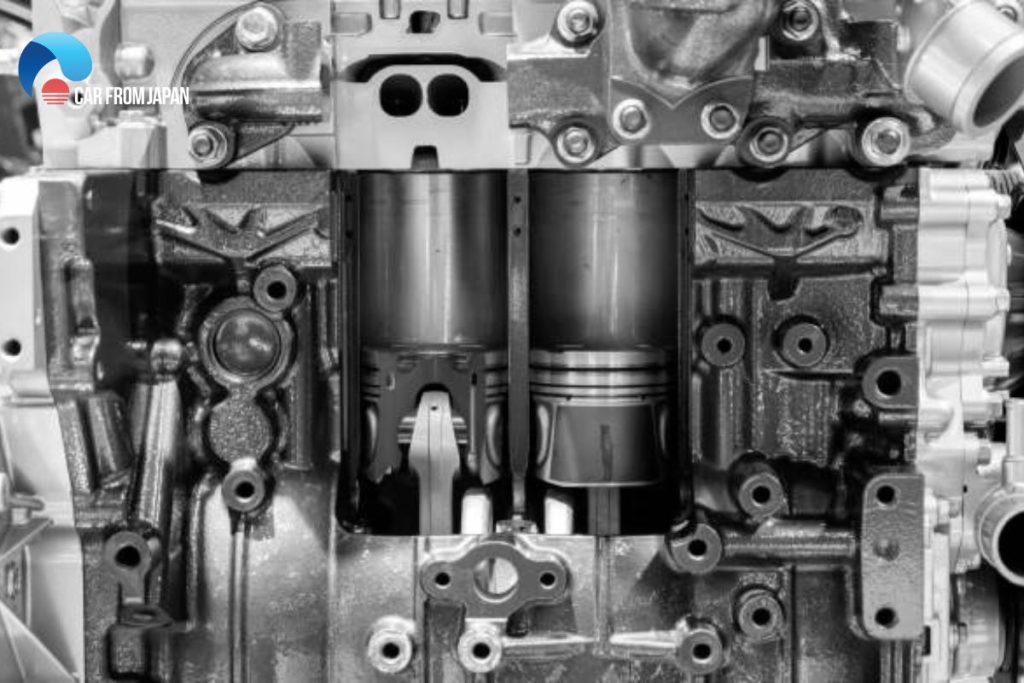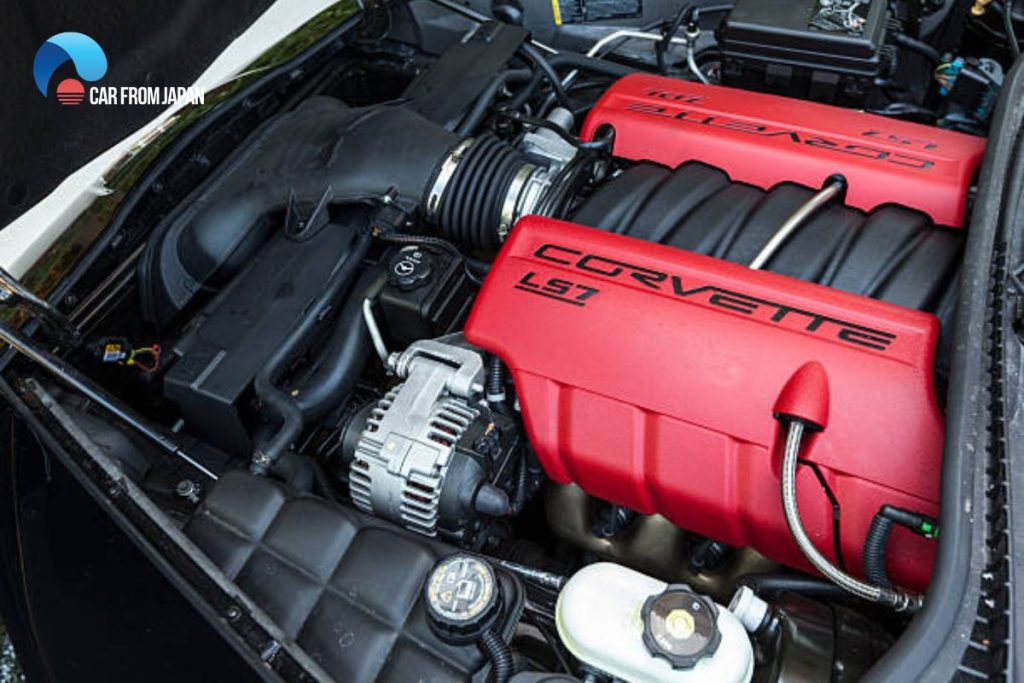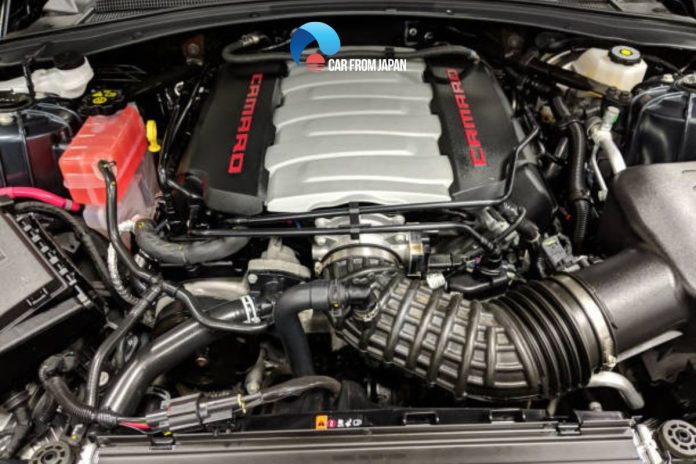Is downsizing your Chevy’s engine from 8 cylinders to 4 a good idea? While it might seem like a simple way to save on fuel, there are some potential problems you should consider before making the switch. Let’s delve into the common potential Chevy 8 cylinder to 4 cylinder problems.
We’ll discuss common issues and other factors that can hinder your V8 engine’s ability to switch to a 4-cylinder mode, which in turn limits fuel savings and overall engine efficiency:
Contents
- What Is The Chevy AFM System In 8-Cylinder Engines?
- What Are The Chevy 8 Cylinder To 4 Cylinder Problems
- How To Locate and Solve The Chevy 8 Cylinder To 4 Cylinder Problems?
- FAQs on Chevy Cylinders
- Can cylinder deactivation cause long-term engine damage?
- How can I locate the specific issue with cylinder deactivation in my Chevy?
- Can I disable cylinder deactivation in my Chevy if I’m experiencing issues?
- Is there a recall or warranty for Chevy cylinder deactivation issues?
- Can routine maintenance prevent cylinder deactivation problems?
- Should I consult a mechanic for cylinder deactivation problems?
- Can cylinder deactivation be beneficial in terms of fuel savings?
- Final Words
What Is The Chevy AFM System In 8-Cylinder Engines?
Chevrolet has widely adopted its cylinder management system, known as AFM (Active Fuel Management), in recent iterations of both V6 and V8 engines.
In many V8 engine configurations, this system deactivates four cylinders, effectively transforming your powerful V8 into a more efficient V4 engine.
While this may lead to a reduction in engine power and a slightly rougher performance, it results in approximately 30% less fuel consumption.
The primary goal of the AFM system is to enhance fuel efficiency, but it serves another critical purpose, minimizing the emission of exhaust gasses during Chevy’s operation.
These dual objectives are of utmost importance as they enable Chevrolet to align its robust engines with specific emission standards, ensuring compliance with environmental regulations.
Here’s an overview of how the system operates:

- When your engine runs at a consistent speed with a steady RPM, the load on the cylinders decreases.
- Special sensors monitor this load, and when it reaches a certain threshold, they signal the Engine Control Unit (ECU) to stop delivering fuel to specific cylinders.
- The ECU responds by cutting fuel injection to four cylinders, effectively transforming your V8 engine into a V4. Two cylinders on each side remain operational.
- This V4 mode continues until you press the accelerator pedal harder for acceleration or when the engine experiences increased load.
- When this happens, the sensors instruct the ECU to supply fuel to all cylinders, returning the engine to V8 operation.
- Active Fuel Management (AFM) is most beneficial during highway driving with consistent speeds and low engine loads.
- In city driving or while towing heavy loads, AFM typically remains inactive to ensure the full power of the engine is available.
In modern engines, AFM offers significant fuel savings, especially noticeable in V8 vehicles. This is reflected in more favorable EPA estimated gas mileage ratings for highway driving with AFM-equipped vehicles.
However, despite its apparent simplicity, various components within the AFM system of Chevy engines can malfunction and lead to costly repairs.
What Are The Chevy 8 Cylinder To 4 Cylinder Problems
Rough idle
One of the initial indications of cylinder deactivation problems is a rough or uneven idle when the engine shifts between 8 and 4 cylinders.
This occurs because the transition between different cylinder modes must be seamless for the engine to run smoothly. Several factors can contribute to this roughness:
Faulty sensors
The cylinder deactivation system relies on various sensors to monitor engine conditions and execute the transition between cylinder modes accurately.
If any of these sensors, such as the camshaft position sensor or the engine control module (ECM), are malfunctioning or providing inaccurate data, it can result in a jerky transition and a rough idle.
Worn spark plugs
Worn or fouled spark plugs can lead to incomplete combustion in the deactivated cylinders.
This incomplete combustion causes a misfire, which manifests as roughness at idle and during the cylinder mode transition. Regular spark plug maintenance and replacement are essential to prevent this issue.
Carbon buildup
Carbon deposits within the engine, particularly on the intake valves and in the combustion chamber, can hinder the combustion process.
This carbon buildup can affect the deactivated cylinders when they are reactivated, leading to rough idling and decreased performance. Periodic carbon cleaning or using fuel system cleaners can help mitigate this problem.
Excessive vibration
Some drivers may detect heightened engine vibration when the engine switches between 8 and 4 cylinders. This unsettling sensation can result from various factors:
Engine mounts

Engine mounts play a crucial role in stabilizing the engine and reducing vibrations. Excessive engine vibration during cylinder mode transitions could signify worn or damaged engine mounts.
Cylinder deactivation system issues
Vibrations may also originate from faults within the cylinder deactivation system itself. This could involve problems with the solenoids, valves, or actuators responsible for managing cylinder activation.
Warning lights
Modern Chevy vehicles feature advanced engine management systems capable of detecting cylinder deactivation anomalies. When the system identifies a problem, it can trigger warning lights on the dashboard, such as:
Check engine light
This light may illuminate to indicate a fault within the engine management system, including issues related to cylinder deactivation.
AFM (Active Fuel Management) indicator
Some Chevy models have a dedicated indicator that specifically alerts drivers to cylinder deactivation problems.
When these warning lights appear, it’s essential to promptly diagnose and resolve the underlying issue to prevent further complications and maintain optimal engine performance.
Loss of power
A loss of power or hesitation during the transition between cylinder modes can be concerning for drivers. This phenomenon is often linked to:
Misfires
In some cases, misfires can occur in one or more cylinders when transitioning between modes. Misfires result in a temporary loss of power and can be due to issues like faulty ignition components or inadequate fuel delivery.
Fuel delivery problems
Problems with the fuel delivery system, such as clogged fuel injectors or a malfunctioning fuel pump, can lead to inadequate fuel supply during cylinder reactivation. This can cause hesitation and a temporary loss of power.
Addressing these power-related issues often involves a thorough inspection of the ignition system and fuel delivery components to identify and rectify the root causes.
Lifter Failures
The most prevalent issue associated with AFM (Active Fuel Management) is lifter failure. Lifters play a crucial role in controlling the opening and closing of valves, enabling cylinders to function properly. However, these components have a finite lifespan.
In nearly all AFM-equipped engines, lifter failures are a common occurrence, and repairing or replacing them can be a substantial expense because it entails disassembling the engine heads.
The likelihood of lifter failure increases in vehicles where AFM is frequently activated. For instance, if you primarily use your truck for city driving or consistently tow heavy loads, the lifters are less affected by AFM and tend to remain in good condition.
On the other hand, if you primarily drive on highways, the AFM system operates continuously, which accelerates the wear and tear on the lifters, leading to premature failure.
How To Locate and Solve The Chevy 8 Cylinder To 4 Cylinder Problems?
Check for diagnostic trouble codes (DTCs)
When warning lights like the check engine light or the AFM indicator illuminate, it’s essential to use a diagnostic scanner to retrieve any Diagnostic Trouble Codes (DTCs) stored in the vehicle’s computer. DTCs are specific codes that point to the system or component causing the issue.
These codes act as valuable clues for pinpointing the problem affecting the cylinder deactivation system. Pay close attention to codes related to cylinder misfires, oxygen sensors, or other components linked to the AFM system.
Inspect spark plugs and ignition system
Cylinder deactivation issues often result from misfires, which can be caused by worn or fouled spark plugs. To address this, regularly replace spark plugs according to the manufacturer’s recommended intervals.
Ensure you use the correct type and heat range of spark plugs for your specific engine. Additionally, inspect the entire ignition system, including ignition coils, wires, and the distributor if applicable.
Look for signs of wear, damage, or corrosion and address any issues promptly.
Clean or replace sensors
The proper functioning of the cylinder deactivation system relies on various sensors, such as oxygen sensors and the camshaft position sensor. Over time, these sensors can accumulate dirt, carbon deposits, or simply wear out.
Cleaning or replacing these sensors can often resolve problems with the cylinder deactivation system. Carefully follow manufacturer guidelines for sensor maintenance or replacement. This may involve using specialized cleaning solutions or specific procedures.
Check for carbon buildup
Consider using fuel system cleaners or having a professional perform a carbon cleaning service. Carbon cleaning helps remove deposits and ensures optimal engine performance, including proper cylinder deactivation.
Inspect motor mounts
Excessive engine vibration during cylinder deactivation transitions can indicate issues with motor mounts. These mounts secure the engine to the vehicle’s frame and play a crucial role in minimizing vibrations.
Have your motor mounts inspected regularly and replace them if necessary. Damaged or worn motor mounts can not only cause discomfort but also affect the overall health of your vehicle’s components.
Professional diagnosis
If you find it challenging to locate or resolve cylinder deactivation issues independently, it’s advisable to seek professional diagnosis from a qualified mechanic or a dealership with expertise in Chevy vehicles.
They possess specialized tools and in-depth knowledge to conduct a comprehensive evaluation. This includes using advanced diagnostic equipment to interpret DTCs accurately and performing tests to identify the specific problem affecting the cylinder deactivation system.
Professional mechanics can recommend appropriate repairs or replacements based on their findings, ensuring a thorough and effective solution to your Chevy’s cylinder deactivation issues.
Check out this video from TK’s Garage to get more information on how to disable Active Fuel Management AFM or DOD easy and free!
FAQs on Chevy Cylinders
Can cylinder deactivation cause long-term engine damage?
When functioning correctly, cylinder deactivation should not cause long-term engine damage. However, problems left unaddressed, such as misfires or sensor issues, can potentially lead to engine damage over time.
How can I locate the specific issue with cylinder deactivation in my Chevy?
Start by checking for diagnostic trouble codes (DTCs) using an OBD-II scanner. These codes can provide insights into the specific issue affecting the system. Inspecting spark plugs, sensors, and performing a carbon buildup check can also help pinpoint the problem.
Can I disable cylinder deactivation in my Chevy if I’m experiencing issues?
While it is possible to disable cylinder deactivation through aftermarket devices or tuning, it’s generally not recommended unless necessary. It’s better to address the underlying issues causing problems with cylinder deactivation.
Is there a recall or warranty for Chevy cylinder deactivation issues?
There have been instances of recalls related to cylinder deactivation issues in certain Chevy models. Check with your local dealership or Chevrolet’s official website to see if your vehicle is affected and if any warranty or recall applies.
Can routine maintenance prevent cylinder deactivation problems?
Regular maintenance, including timely spark plug replacement, sensor maintenance, and carbon buildup prevention, can help prevent cylinder deactivation issues and ensure smooth operation.
Should I consult a mechanic for cylinder deactivation problems?
If you’re unable to resolve cylinder deactivation issues on your own or if warning lights persist, it’s advisable to consult a qualified mechanic or Chevrolet dealership with expertise in your specific vehicle model.
They can perform a thorough diagnosis and recommend appropriate solutions.
Can cylinder deactivation be beneficial in terms of fuel savings?
When functioning correctly, cylinder deactivation can significantly improve fuel efficiency during highway driving conditions, helping you save on fuel costs over time.
Final Words
In summary, Chevy’s shift from 8 cylinders to 4 cylinders offers fuel efficiency benefits but also poses challenges.
Common Chevy 8 cylinder to 4 cylinder problems include increased oil consumption, occasional roughness, reliability concerns, costly repairs, and potential impacts on resale value.
To mitigate problems, regular maintenance and proactive addressing of issues are essential for a positive ownership experience.



